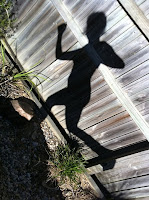Urge Urinary Incontinence and Overactive Bladder

Urge and Stress Incontinence are quite different although they can often occur together. What is it? Urge Incontinence is a symptom of Overactive Bladder (OAB) which is the overly frequent contractions of the detrusor muscle which forms the muscular wall of the bladder. This occurs even when the bladder is not full and can be in response to certain triggers, for example warm water, getting home from an outing (key-in-the-door syndrome), and different foods. It can also make you feel like you need to go to the washroom every 20 minutes but when you do, there's not a whole lot to empty. OAB does not always cause leaking, however it can lead to urge incontinence if you are unable to make it to the washroom on time. Particularly if you do not have adequate pelvic floor muscle strength. While it sounds annoying at the most, it can have a significant impact on your lifestyle as you are constantly worried about where the closest bathroom is. When it becomes more severe, act




